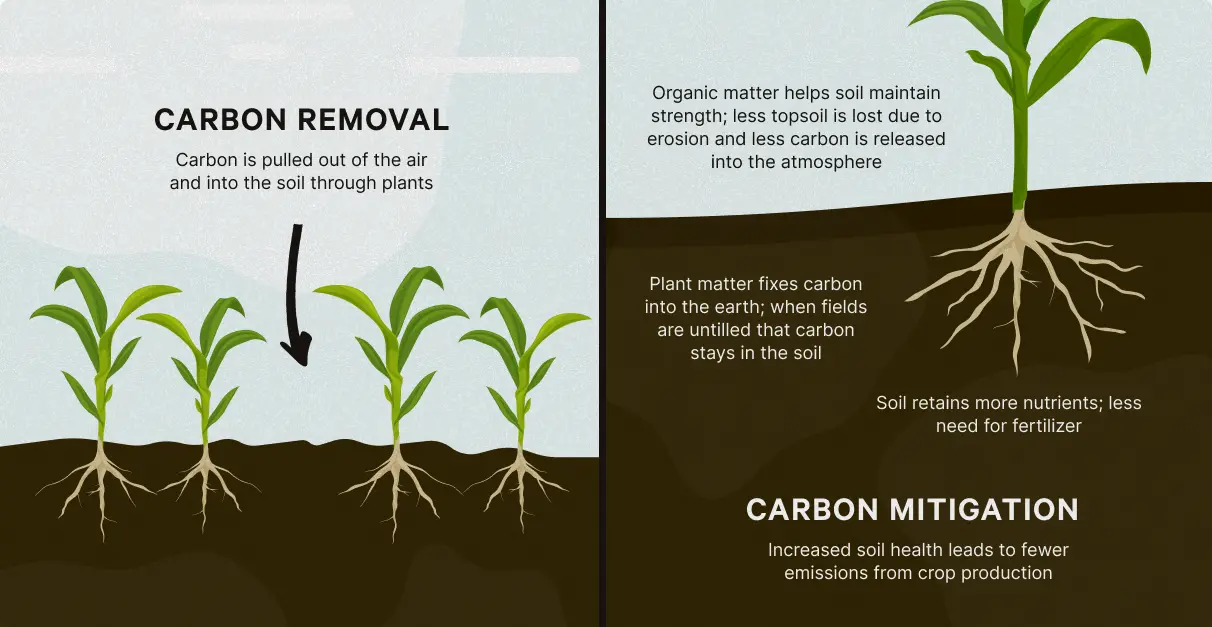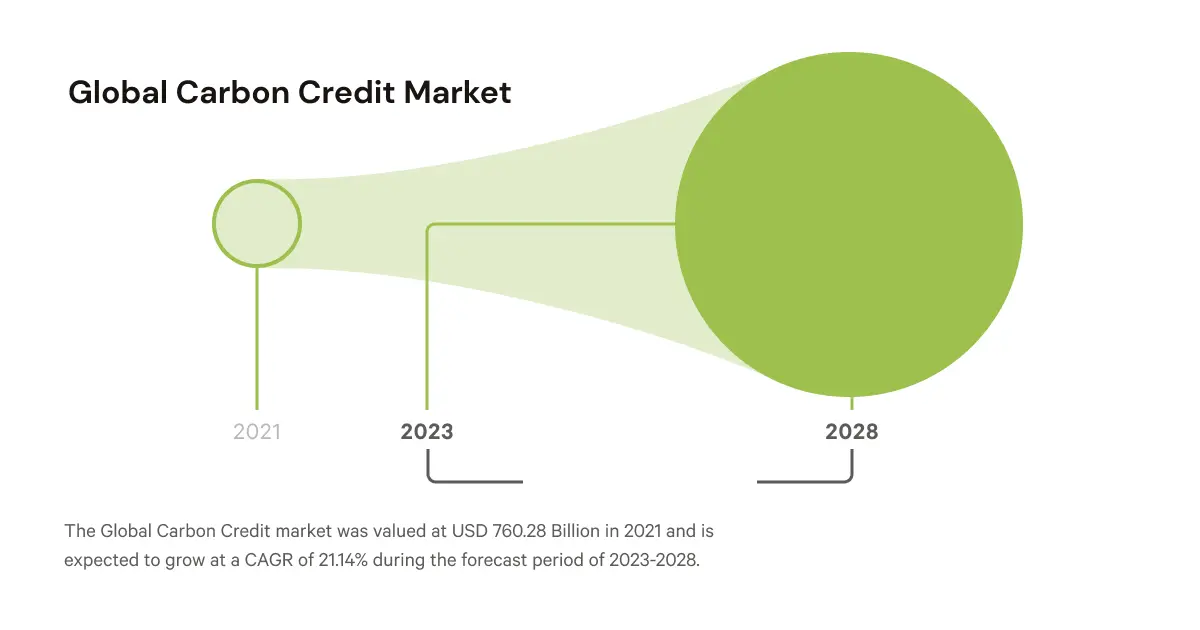We must accelerate our impact in order to meet short- and long-term climate goals.
There are reasons for us to be optimistic about our potential for climate action within agrifood supply chains — including evolution in science, technology and policy, and investment in new programs and solutions. However, the agrifood industry will have to accelerate its impact in order to meet both our short- and long-term climate goals.
What does that mean — ‘accelerate impact’? It means that we must increase the speed at which we make change, and increase the outcomes of our efforts overall.
Opportunity lies in carbon emissions.
When it comes to carbon emissions, we have many opportunities for climate action. We can mitigate emissions by sequestering carbon and/or paying for offsets, which removes carbon after it has entered our ecosystem, or we can work to avoid emissions altogether, in which the carbon does not enter the ecosystem in the first place.
Which of these has the greatest impact? Which of these is easiest to progress, promote and accelerate?
It’s a trick question. In order to truly accelerate and maximize our impact in climate action, we must promote and progress mitigation (including sequestration) and removal. Accessing all our options gives us the best chance at mitigating climate change.
How can we do that with limited time and resources?

Look to the future, with one eye on the past
Some leading climate-tech investors argue that we should invest in strategies of the future while embracing currently available climate strategies. Technologies of the future include finding new ways to account for avoided emissions, quantify carbon removals and navigate the carbon marketplace.
Many strategies are available — but we cannot wait for them to be perfect before we invest in them, nor can we choose the strategy with the highest ‘potential.’ We must do what we can today, while building a structure for future growth and scale.
An example: the carbon marketplace
A great example of this is the carbon marketplace. Some companies purchase carbon offsets to meet their climate goals in lieu of developing a more comprehensive climate strategy. However, the vast majority of offsets (>95%) that are traded in voluntary carbon markets are derived from avoided emissions rather than reductions or removals. Gauging the true climate impacts of these offsets is tricky, and therefore the value of some carbon offsets is uncertain.
This lack of consistency and clarity in the carbon market leads to increased risk for companies investing in the space and more hesitation when it comes to investment. However, if companies get involved in the space now, they can make change today while contributing to a more stable structure for future carbon markets.
This concept can be applied to carbon removals, mitigation and avoidance: participation in our current strategies (and support for all of them) can help us increase our short-term impact and set the industry up for long-term success.

Regenerative agriculture covers all bases.
Investing in regenerative agriculture enables companies to avoid, reduce and remove emissions in a way that is scalable globally with current technological capabilities. This is especially important for food companies that have a large portion of their emissions tied to agricultural production — it allows us to make an impact today while establishing a stronger system for the future.
How does Regrow accelerate impact?
Regrow works with a range of partners to implement and monitor programs that help avoid, reduce, and remove emissions.
Regrow works with several partners, including Cargill, Kellogg’s and others, to establish programs that reduce and avoid emissions, encouraging growers and supply chain partners to move away from conventional practices and move towards less carbon-intensive processes. An example is encouraging growers not to till their fields, or to adopt more precise fertilizer application techniques to avoid over-application.
Regrow also helps partners implement reduction projects, such as strategic irrigation management practices on rice paddies that reduce methane, or more effective manure management practices that can reduce nitrous oxide volatilization.
Finally, Regrow works with partners to remove carbon directly by implementing agronomic practices that accrue carbon more permanently in the soil, such as strategic crop rotations, incorporating cover crops, and employing regenerative grazing systems.
Collective action is an accelerant.
At Regrow, we are thankful to work with partners on diverse climate-smart agriculture initiatives.
While there is a lot to iron out, our collective action and investment in emissions mitigation, reduction and avoidance is making change today, and preparing our industry for a stronger future.
.webp)


